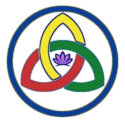Imagine someone meditating. Where are they? Are they in a room or out in nature? Are they with anyone or are they alone? Now, answer this question. Who are they? Many people think that only Buddhists meditate or that you need to be Buddhist in order to meditate, that Buddhism and meditation somehow go inextricably hand in hand. If you are already a meditator, you may already know that is not the case. You may have done some meditation in a yoga class for example. Did you know that meditation practices are common to every religion and spirituality? The form or purpose for meditation is different, but every spiritual tradition includes meditation practice.
Buddhists, of course, meditate. The man, Siddhartha Gautama, who is commonly known as the Buddha, is world famous as a meditator. The majority of statues of him show him seated in meditation. That was, in the parlance of our time, his thing. He was of course not the first human to sit in meditation. Meditation was already an established practice among the asetics of his time in the Vedic tradition which would later become Hinduism. Already in the time of Siddhartha Gautama, there was a long tradition of severe asceticism and meditation to achieve freedom from the suffering of the material world. The Buddha came upon a middle path of less harsh discipline. But this is not the only lineage of meditation.
In the Judeo/Christian/Islam traditions, there is also a history of meditation. There is direct evidence of meditation in medieval mystic Judaism, but there was also a tradition of going out alone into the wilderness for spiritual purification and prayer. Abraham going out to listen for the voice of God is not much different from meditation. Early Christian ascetics in the Egyptian dessert, also known as the Desert Fathers and Mothers, did rigorous meditation in the 3rd century CE. In addition to the cloistered religious monks and nuns in medieval times in Europe, there were a group of people called Anchorites. Anchorites were lay people who would shut themselves away to purify their souls, and meditation was an important element of their practice. For the Islam branch, one of the sects most famous for meditation are the Sufi and their Whirling Dervishes whose spinning dance to merge with the Divine is also a form of meditation.
Shamanic traditions also have meditative practices. The Shamans in Korea, which predate the arrival of Buddhism, have an ecstatic dance to demonstrate their powerful connection to the spirit world. The Lakota peoples of North America have their sweat lodges to commune with ancestors and the spirit world. In South America, though trances induced by hallucinogenic ayahuasca are becoming more famous around the world these days, there are also meditative or trance inducing practices using percussion instruments such as drums and rattles.
The list of meditation practices is global and quite diverse in both technique and purpose. These practices span history and have evolved over time. There is, for example a singing meditation that is famous as an interdenominational Christian practice called Taizé prayer, which began after World War II in the small village of Taizé, France. A medieval English Catholic practice was revived in the United States by Father Thomas Keating and renamed Centering Prayer. Meditation is a strong and profound spiritual practice, and there is not one quintessential or ideal form of meditation. The best kind of meditation is like the best kind of exercise. It is the one you will do regularly and continue to do with relish. The key is to find the one or ones that are best for you.
The next articles in this series will begin to give you some assistance in choosing a meditation practice and getting started. If you already have a meditation practice, the next articles may open you up to more possibilities.

